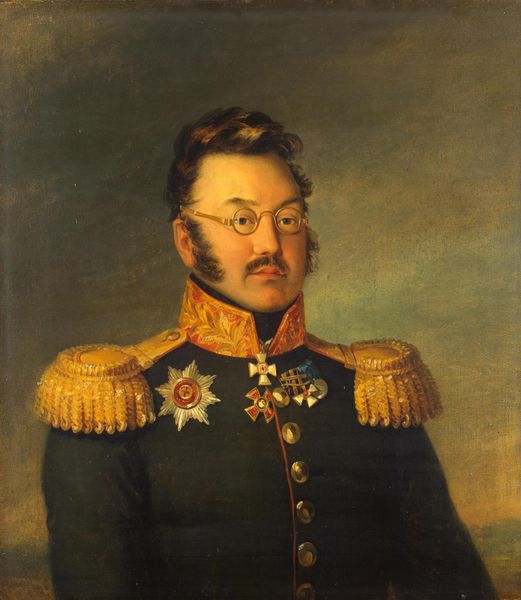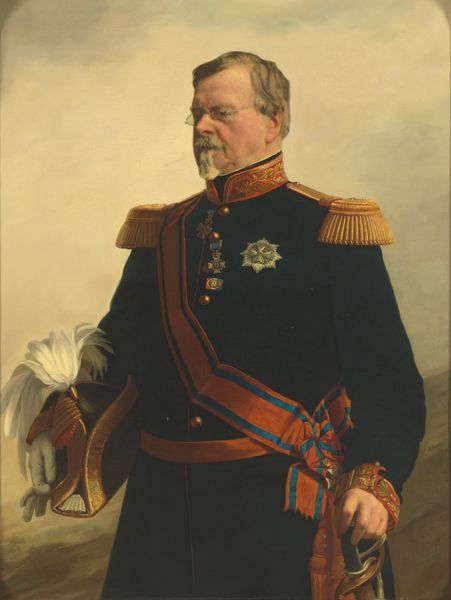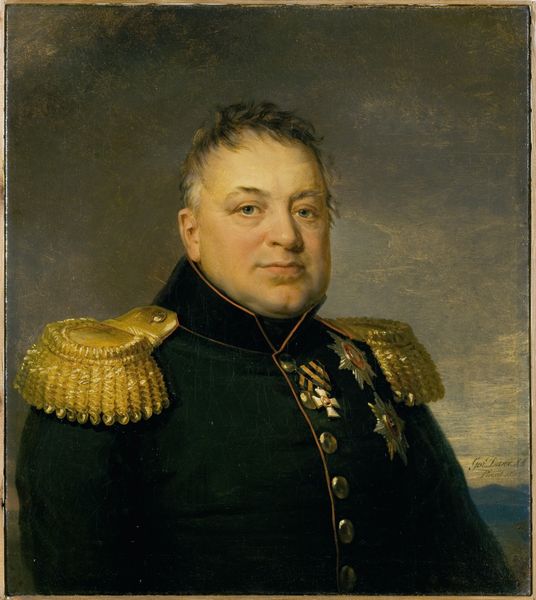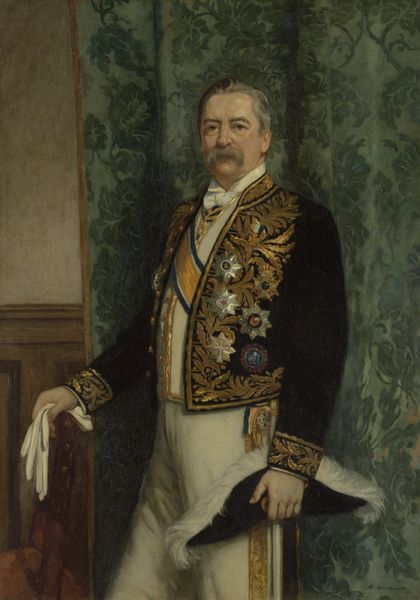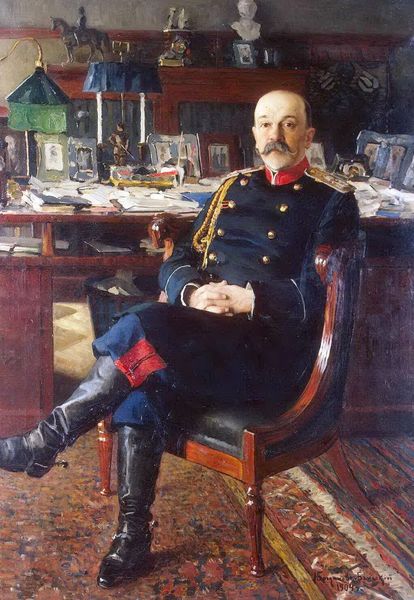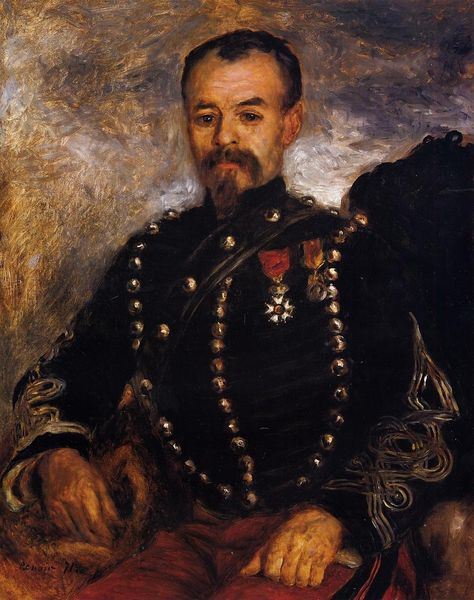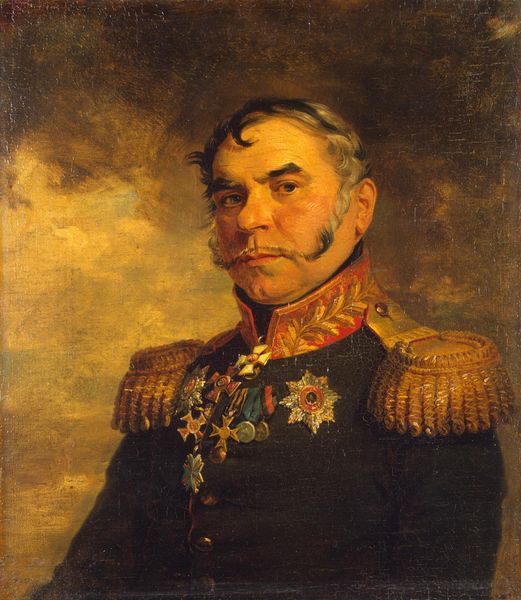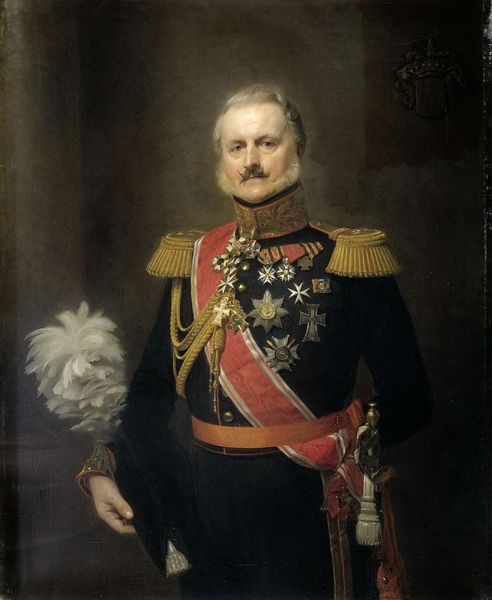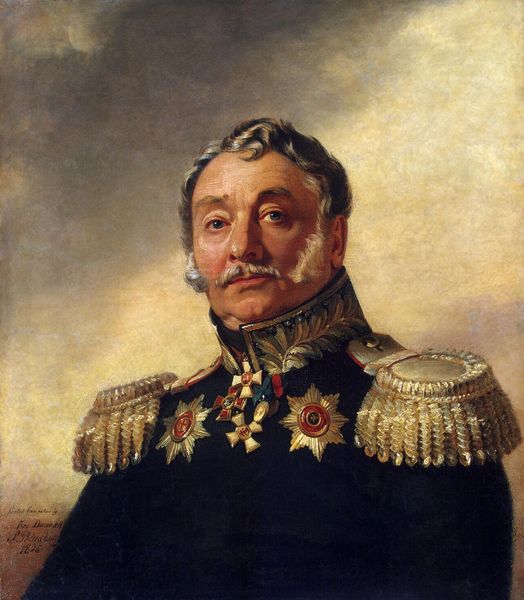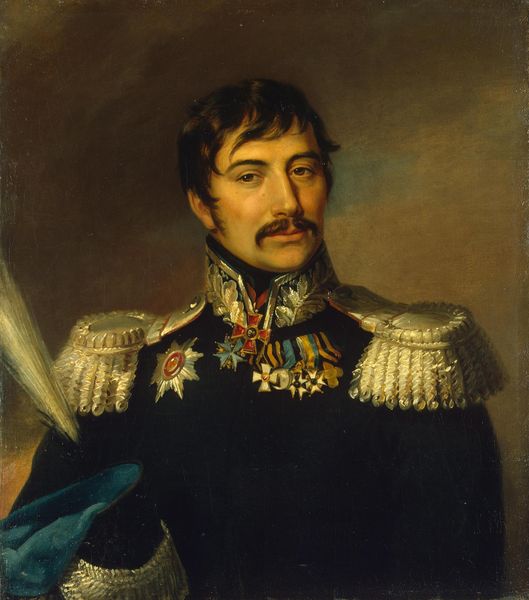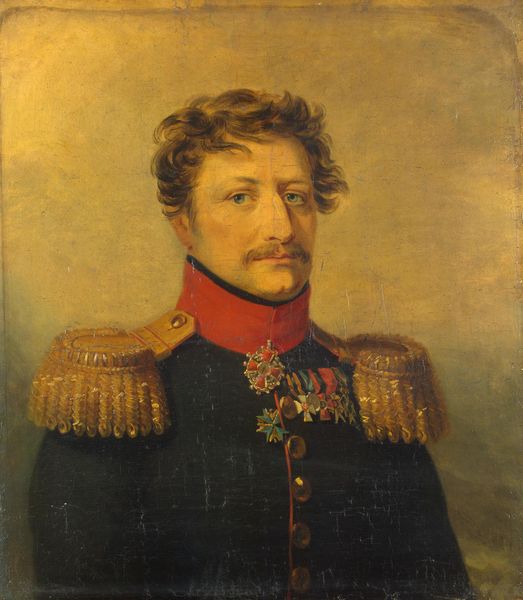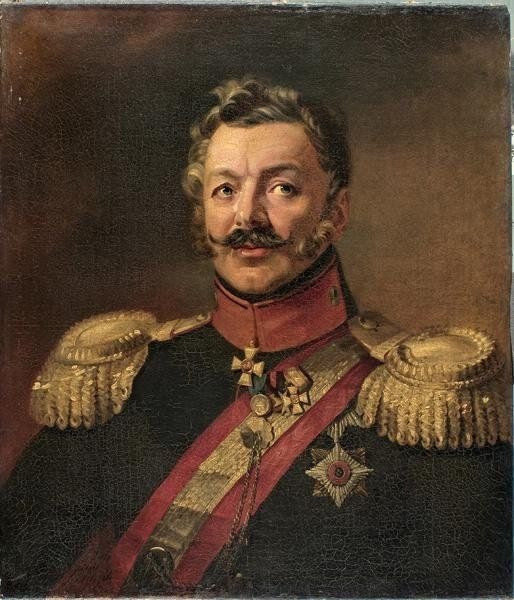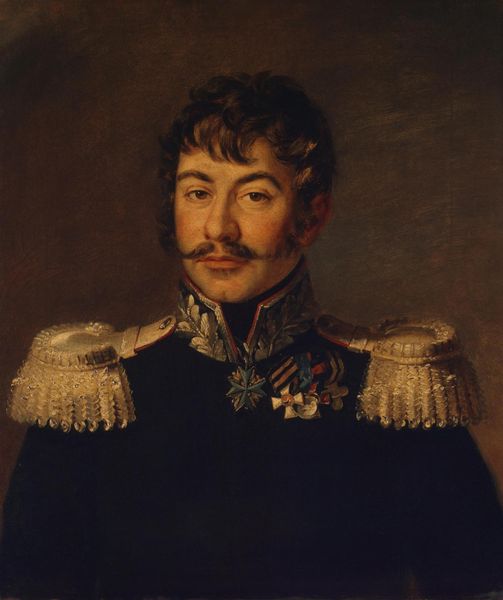
Copyright: Public domain
Curator: Here we have Ernest Hébert's “Portrait Du Colonel Léon De Beylié," completed in 1898. Editor: My initial sense is one of steadfast formality undercut by a hint of wistful impermanence. The birds floating over his head feel... prophetic. Curator: Absolutely, that touch of Romanticism certainly colours the Realist approach! What do you read in Colonel Beylié's medals? Are they simply signifiers of bravery? Editor: Medals aren't "simply" anything. Consider the intense labour, from extraction of metal to delicate tooling. Each one represents economic activity, industrial development, plus all of that personal military service besides! They are as much commodity as commendation. Curator: Well observed. Their brilliance catches the light, drawing our eye toward what matters. His achievements and service are what he wants the world to recognize, even to internalize. And that sky, though brushed loosely, seems pregnant with the infinite possibilities denied him by military structure. Editor: Denied? Or enabled? The tight collar, the structured tailoring, those stiff, thick epaulettes! This work sings of societal norms, a very material demand on Beylié's physical presentation. I wouldn't frame it as simply a tragic curtailment. He made this bed, or uniform, and he occupies it fully. Curator: A valid point! We may see restraint as imposed, while he experienced that restraint as the support which facilitated distinction. How interesting that Hébert's brushstrokes feel almost as dense as the weight of Colonel Beylié’s commitments. Editor: Hébert was masterful with oils here, you can practically smell the beeswax! Considering he shows this Colonel on the brink of the century, the layers of the canvas reveal not just a portrait, but a snapshot of 19th-century industrial life. Curator: Exactly. Thank you for your insights—examining how visual art carries cultural weight and considering it in tandem with materials and techniques makes for an even richer experience! Editor: My pleasure! And by digging into those materials we begin to unpack entire eras, and how a culture actually defines itself.
Comments
No comments
Be the first to comment and join the conversation on the ultimate creative platform.
